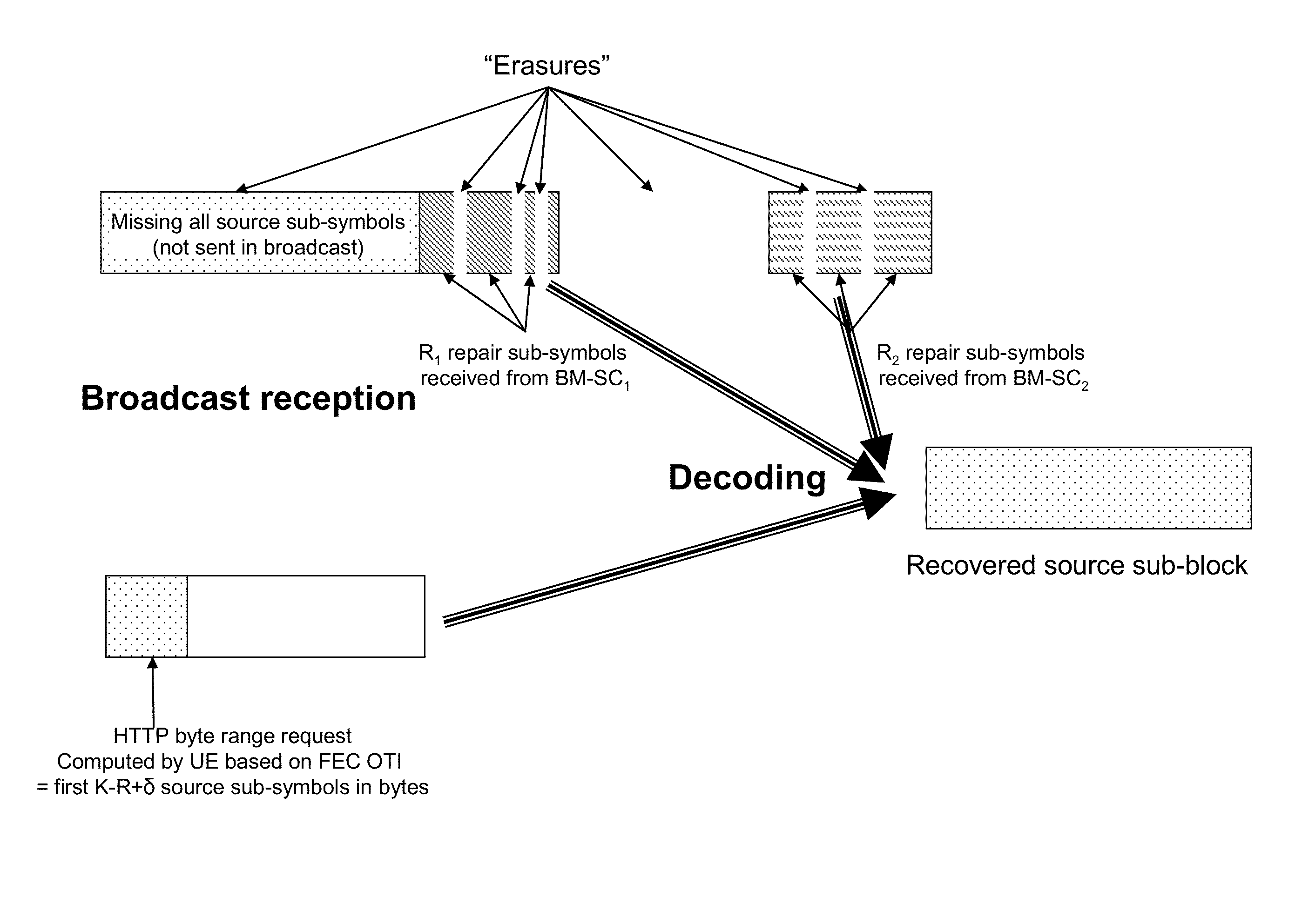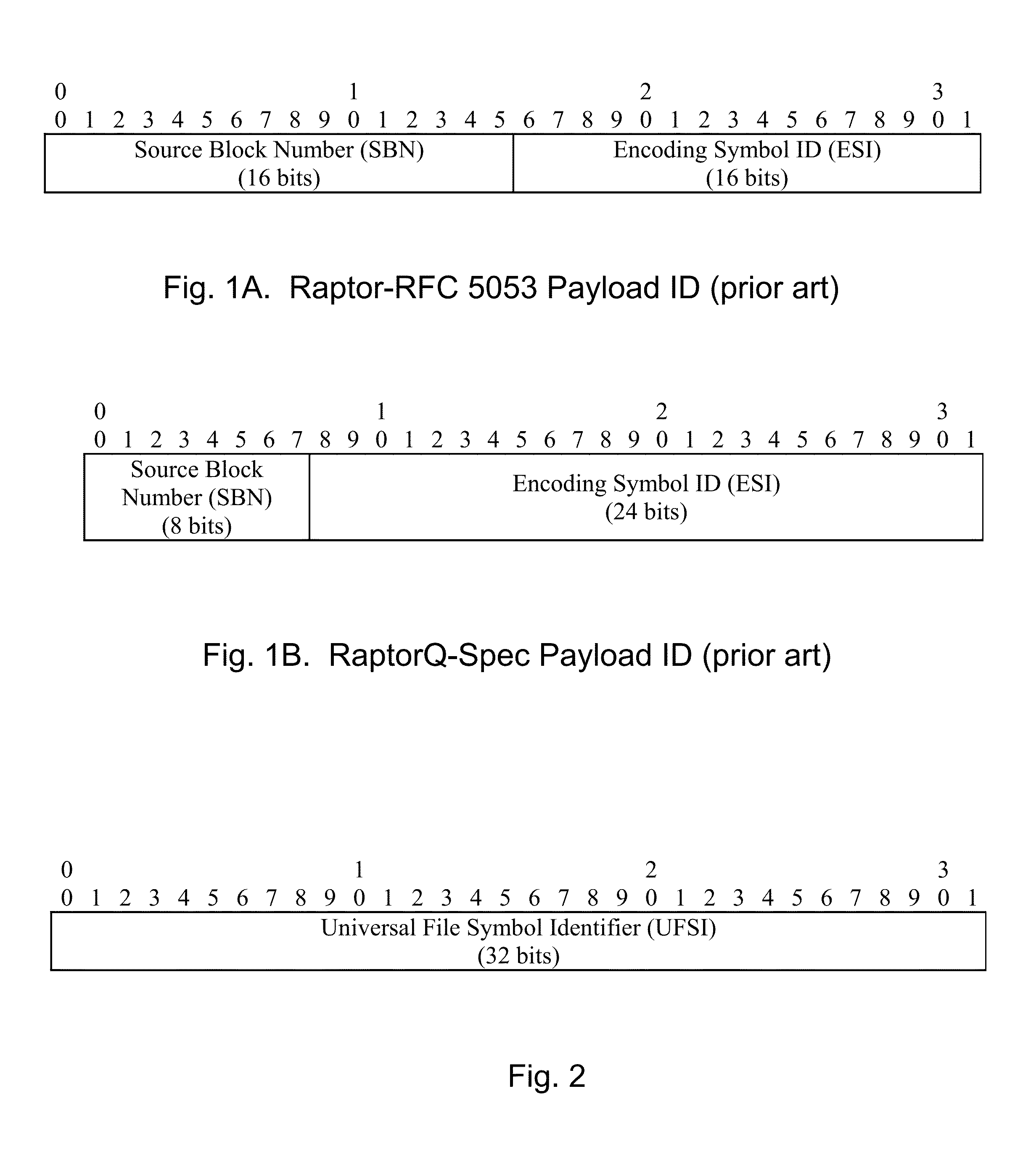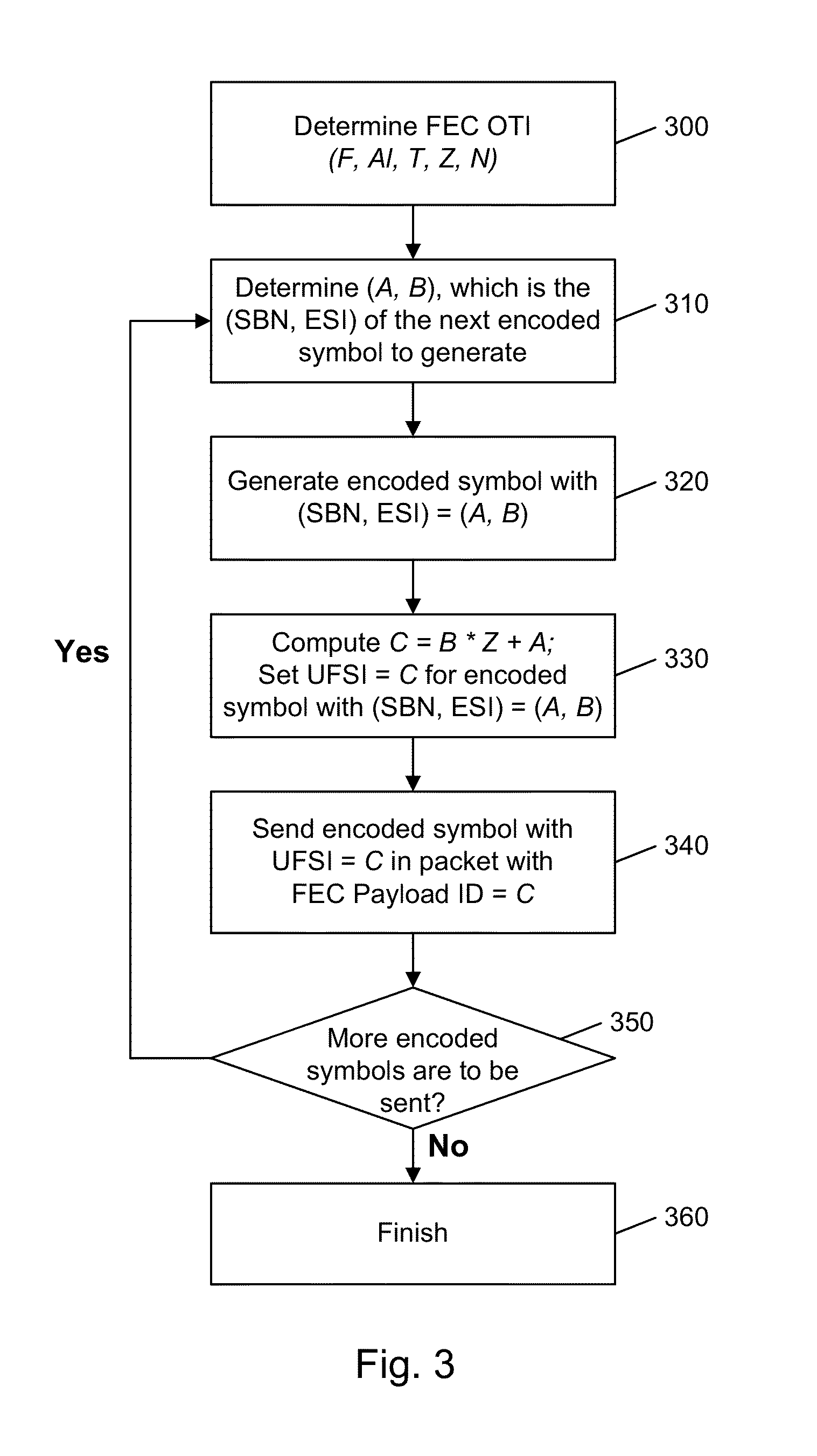Content delivery system with allocation of source data and repair data among HTTP servers
a content delivery system and source data technology, applied in the field of encoding and decoding data in communications systems, can solve the problems of low computational complexity of chain reaction encoding and decoding process, source data might not be entirely recoverable, and relatively computationally intensiv
- Summary
- Abstract
- Description
- Claims
- Application Information
AI Technical Summary
Benefits of technology
Problems solved by technology
Method used
Image
Examples
Embodiment Construction
[0092]In embodiments herein, file delivery is performed by an encoder / transmitter system that sends a file and a receiver / decoder system that receives a file. The format of the transmissions is coordinated so that the decoder understands what the encoder encoded. As shown in various examples below, file delivery is an example of general object delivery and unless otherwise indicated, it should be apparent from these examples that objects can be treated as files and possibly vice versa.
[0093]In a packet delivery system, the data is organized into packets and transmitted as packets. Each packet has elements that allow a receiver to determine what is in the packet and how it is laid out. Using the techniques described herein, flexibility is provided for transmitting packets where forward error correction (“FEC”) is used.
[0094]Using these techniques, unequal FEC protection can be provided, as well as bundled delivery of files. It is well-known that when many files are delivered as separ...
PUM
 Login to View More
Login to View More Abstract
Description
Claims
Application Information
 Login to View More
Login to View More - R&D
- Intellectual Property
- Life Sciences
- Materials
- Tech Scout
- Unparalleled Data Quality
- Higher Quality Content
- 60% Fewer Hallucinations
Browse by: Latest US Patents, China's latest patents, Technical Efficacy Thesaurus, Application Domain, Technology Topic, Popular Technical Reports.
© 2025 PatSnap. All rights reserved.Legal|Privacy policy|Modern Slavery Act Transparency Statement|Sitemap|About US| Contact US: help@patsnap.com



